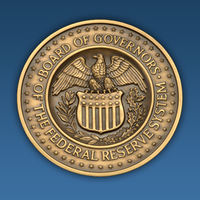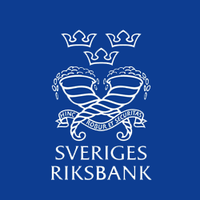The Dollar's Tug-of-War: Economic Signals Amid Global Tensions
June 19, 2025, 10:31 pm

Location: United Kingdom, England, London
Employees: 1001-5000
Founded date: 1694
The U.S. dollar is caught in a storm. Economic data is a mixed bag, and geopolitical tensions loom large. Investors are on edge, navigating a landscape filled with uncertainty. The dollar's recent performance reflects this turmoil, trading higher against most currencies but struggling against the yen.
Recent reports show that American consumers are growing cautious. Retail sales in May fell short of expectations. Yet, there’s a silver lining: solid wage growth continues to support consumer spending. This paradox creates a complex picture for the Federal Reserve. The Fed's upcoming interest rate decision looms large, with mixed signals complicating the outlook.
The dollar index, a measure of the currency against a basket of others, has shown slight gains. It rose to 98.33, a modest increase amid broader market volatility. However, the dollar's strength is not uniform. Against the yen, it remains weak, trading at 144.97. This reflects Japan's own economic challenges and the yen's safe-haven status during turbulent times.
Investors are not just focused on domestic data. Global events are casting long shadows. The ongoing conflict between Israel and Iran adds to the tension. This geopolitical backdrop influences market sentiment. Traders are wary, keeping a close eye on developments that could impact oil prices and, by extension, inflation.
The Federal Reserve's stance is pivotal. Policymakers have opted to keep interest rates unchanged for now. They are treading carefully, weighing the risks of inflation against the need for economic stimulus. The Fed's cautious approach suggests they are not ready to cut rates aggressively, despite pressures from various fronts.
The uncertainty surrounding tariffs also complicates matters. President Trump's trade policies continue to stir the pot. Investors are left guessing how these tariffs will affect inflation and economic growth. The Fed's reluctance to act decisively reflects this uncertainty. They forecast a potential rate cut later this year, but the pace remains slow.
Across the Atlantic, the Bank of England and the Swedish Riksbank are also in the spotlight. Both central banks are expected to announce their own rate decisions soon. The pound has shown some resilience, but it dipped slightly against the dollar. Meanwhile, the euro remains relatively stable, reflecting mixed economic signals from the Eurozone.
Currency markets are reacting to these developments. The euro traded at 1.148 against the dollar, while the pound slipped to 1.3418. The Swedish crown weakened after the Riksbank's anticipated rate cut. These fluctuations highlight the interconnectedness of global economies. A ripple in one market can create waves in another.
As the G7 meeting in Canada approaches, investors are looking for clarity on tariffs. However, past meetings have yielded little progress. This lack of resolution adds to the uncertainty. The market is left to grapple with the implications of potential new tariffs on imports.
In this environment, the dollar's strength is a double-edged sword. On one hand, it reflects confidence in the U.S. economy. On the other, it raises concerns about competitiveness. A strong dollar can hurt exports, making American goods more expensive abroad. This dynamic is crucial for policymakers to consider.
The labor market remains a bright spot. New applications for unemployment benefits have fallen, indicating resilience. However, the overall job market remains fragile. Elevated unemployment claims suggest that not all sectors are recovering equally. This uneven recovery complicates the Fed's decision-making process.
Looking ahead, the dollar's trajectory will depend on several factors. Economic data will continue to play a crucial role. Inflation trends, consumer spending, and labor market indicators will shape the Fed's actions. Additionally, geopolitical developments will weigh heavily on investor sentiment.
The dollar's journey is a reflection of broader economic currents. It is a barometer of confidence, influenced by both domestic and international factors. As the Fed navigates these turbulent waters, the dollar will remain a focal point for investors.
In conclusion, the U.S. dollar is in a state of flux. Economic indicators are mixed, and geopolitical tensions add layers of complexity. Investors are poised, ready to react to new data and developments. The coming weeks will be critical. The Fed's decisions, global events, and economic trends will shape the dollar's path. In this game of chess, every move counts. The stakes are high, and the outcome remains uncertain.
Recent reports show that American consumers are growing cautious. Retail sales in May fell short of expectations. Yet, there’s a silver lining: solid wage growth continues to support consumer spending. This paradox creates a complex picture for the Federal Reserve. The Fed's upcoming interest rate decision looms large, with mixed signals complicating the outlook.
The dollar index, a measure of the currency against a basket of others, has shown slight gains. It rose to 98.33, a modest increase amid broader market volatility. However, the dollar's strength is not uniform. Against the yen, it remains weak, trading at 144.97. This reflects Japan's own economic challenges and the yen's safe-haven status during turbulent times.
Investors are not just focused on domestic data. Global events are casting long shadows. The ongoing conflict between Israel and Iran adds to the tension. This geopolitical backdrop influences market sentiment. Traders are wary, keeping a close eye on developments that could impact oil prices and, by extension, inflation.
The Federal Reserve's stance is pivotal. Policymakers have opted to keep interest rates unchanged for now. They are treading carefully, weighing the risks of inflation against the need for economic stimulus. The Fed's cautious approach suggests they are not ready to cut rates aggressively, despite pressures from various fronts.
The uncertainty surrounding tariffs also complicates matters. President Trump's trade policies continue to stir the pot. Investors are left guessing how these tariffs will affect inflation and economic growth. The Fed's reluctance to act decisively reflects this uncertainty. They forecast a potential rate cut later this year, but the pace remains slow.
Across the Atlantic, the Bank of England and the Swedish Riksbank are also in the spotlight. Both central banks are expected to announce their own rate decisions soon. The pound has shown some resilience, but it dipped slightly against the dollar. Meanwhile, the euro remains relatively stable, reflecting mixed economic signals from the Eurozone.
Currency markets are reacting to these developments. The euro traded at 1.148 against the dollar, while the pound slipped to 1.3418. The Swedish crown weakened after the Riksbank's anticipated rate cut. These fluctuations highlight the interconnectedness of global economies. A ripple in one market can create waves in another.
As the G7 meeting in Canada approaches, investors are looking for clarity on tariffs. However, past meetings have yielded little progress. This lack of resolution adds to the uncertainty. The market is left to grapple with the implications of potential new tariffs on imports.
In this environment, the dollar's strength is a double-edged sword. On one hand, it reflects confidence in the U.S. economy. On the other, it raises concerns about competitiveness. A strong dollar can hurt exports, making American goods more expensive abroad. This dynamic is crucial for policymakers to consider.
The labor market remains a bright spot. New applications for unemployment benefits have fallen, indicating resilience. However, the overall job market remains fragile. Elevated unemployment claims suggest that not all sectors are recovering equally. This uneven recovery complicates the Fed's decision-making process.
Looking ahead, the dollar's trajectory will depend on several factors. Economic data will continue to play a crucial role. Inflation trends, consumer spending, and labor market indicators will shape the Fed's actions. Additionally, geopolitical developments will weigh heavily on investor sentiment.
The dollar's journey is a reflection of broader economic currents. It is a barometer of confidence, influenced by both domestic and international factors. As the Fed navigates these turbulent waters, the dollar will remain a focal point for investors.
In conclusion, the U.S. dollar is in a state of flux. Economic indicators are mixed, and geopolitical tensions add layers of complexity. Investors are poised, ready to react to new data and developments. The coming weeks will be critical. The Fed's decisions, global events, and economic trends will shape the dollar's path. In this game of chess, every move counts. The stakes are high, and the outcome remains uncertain.

